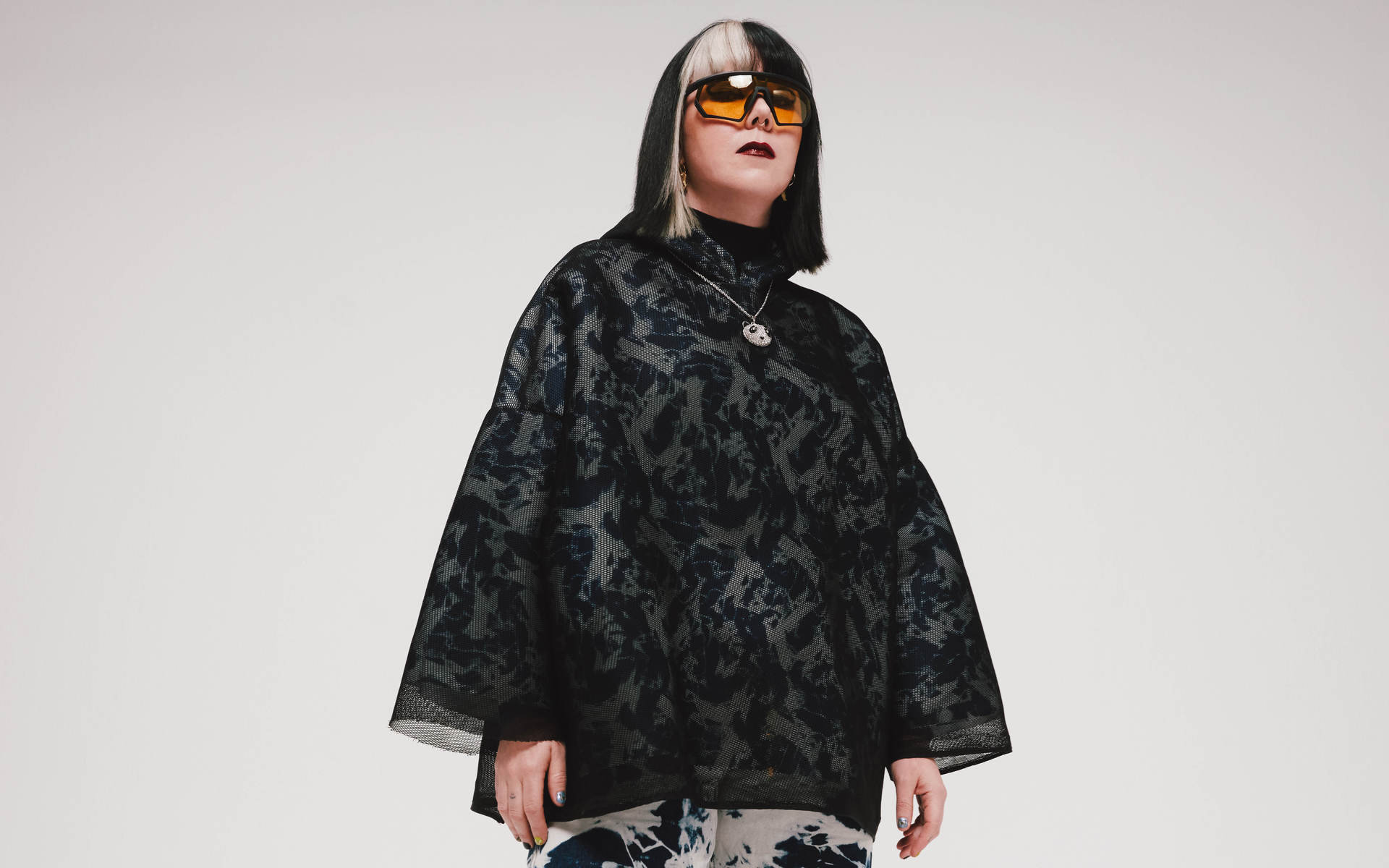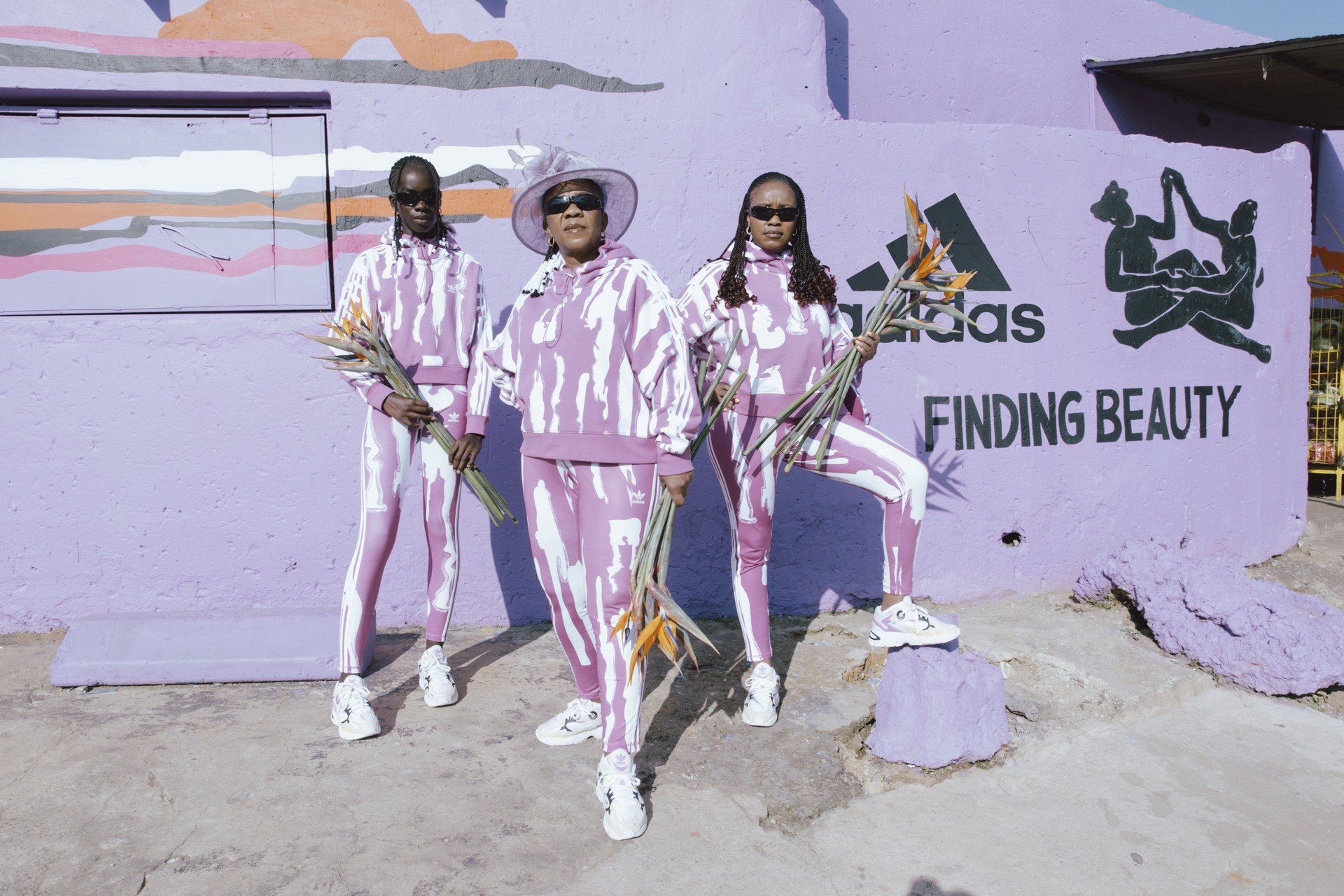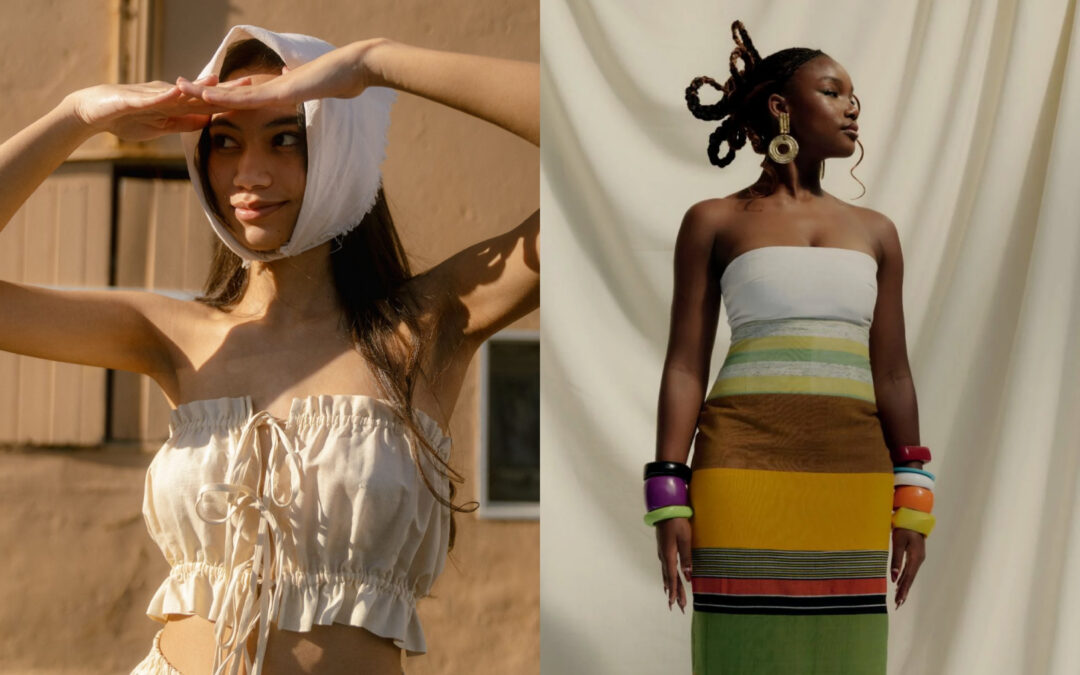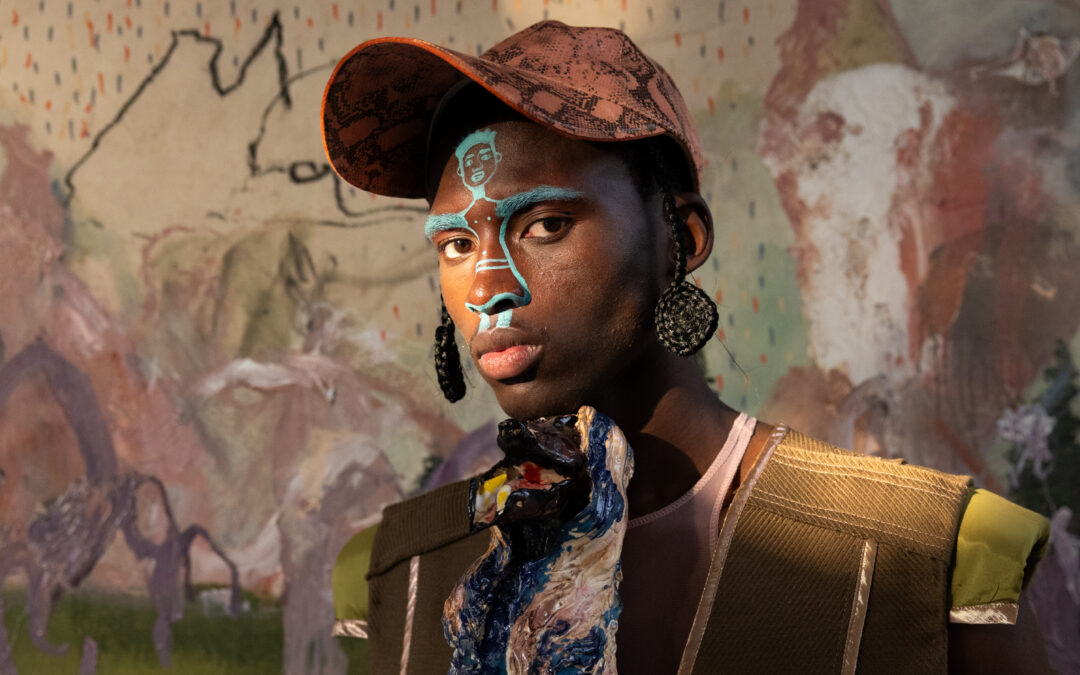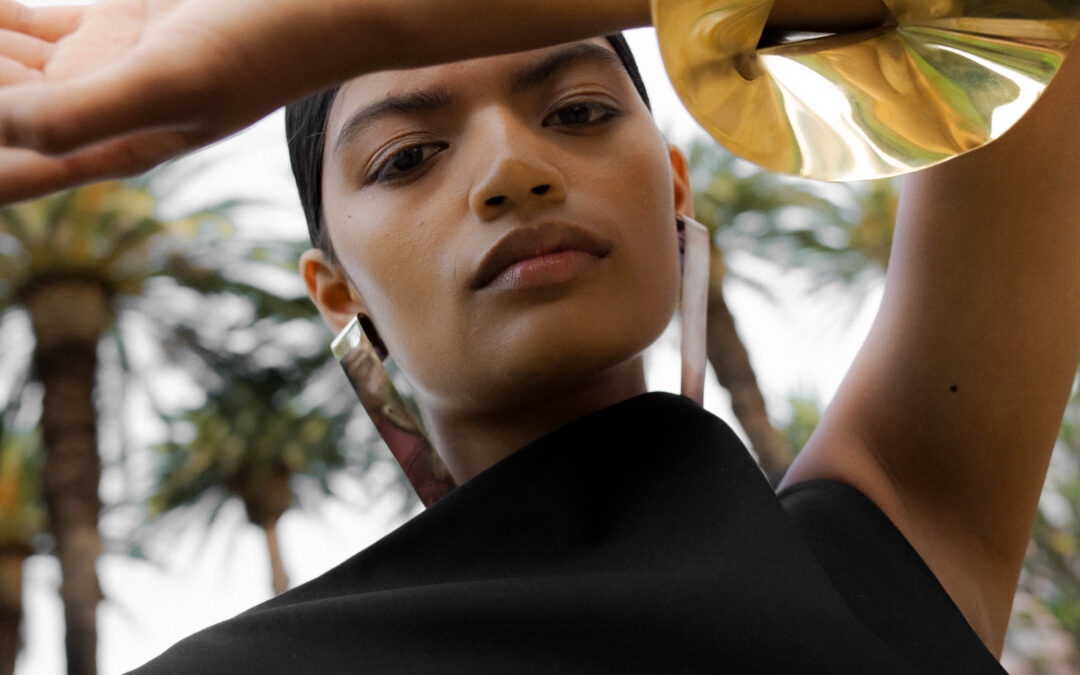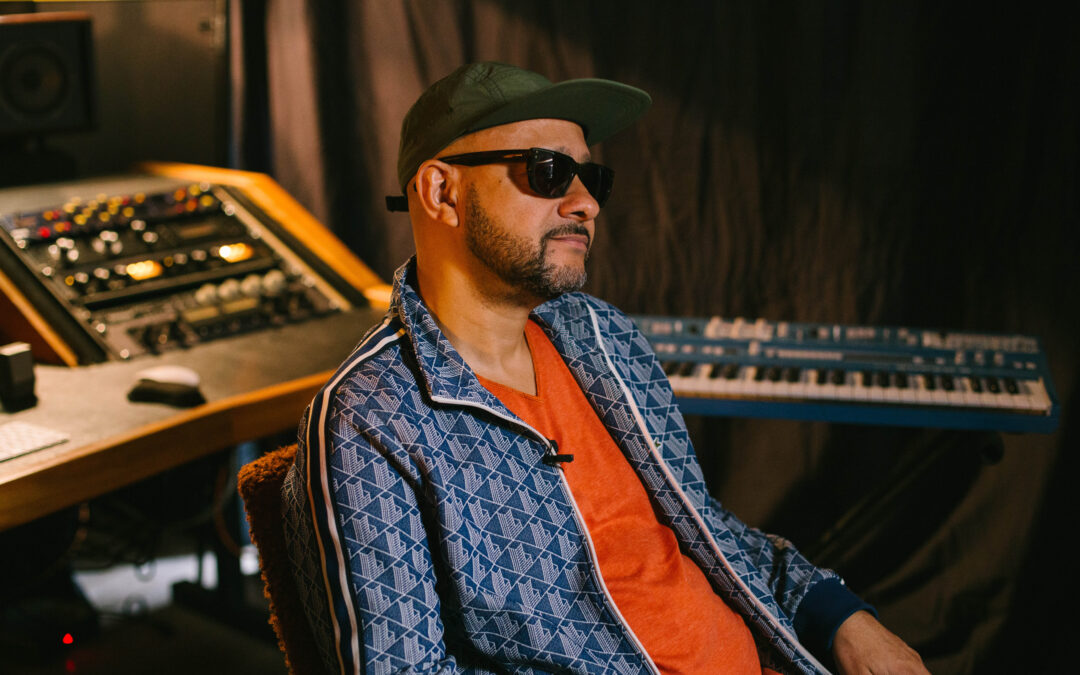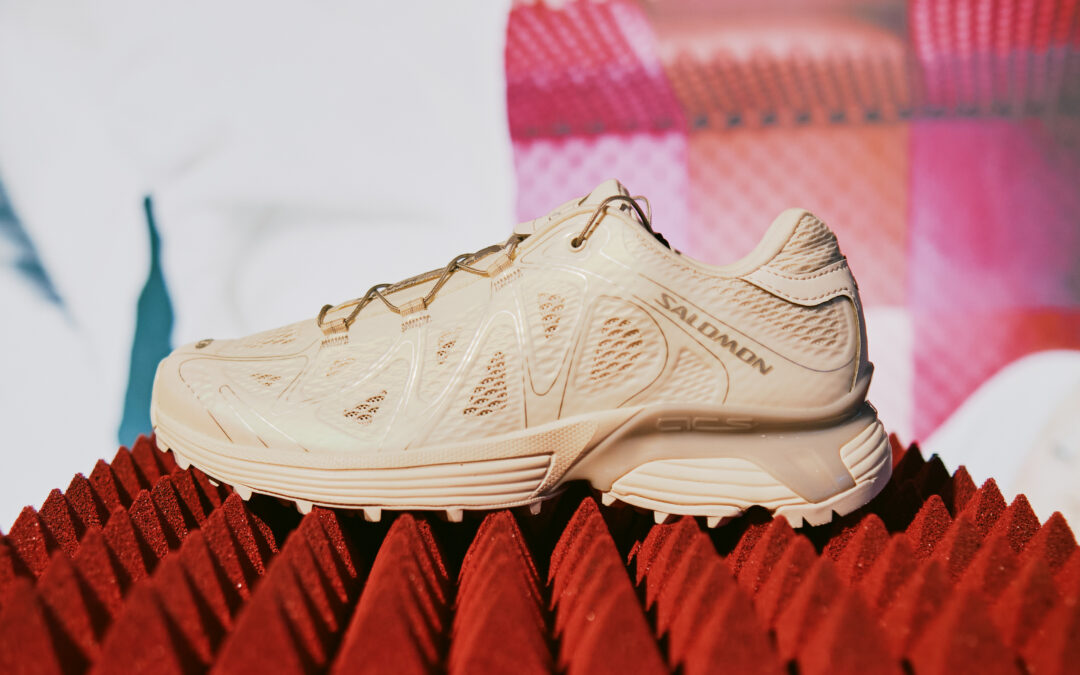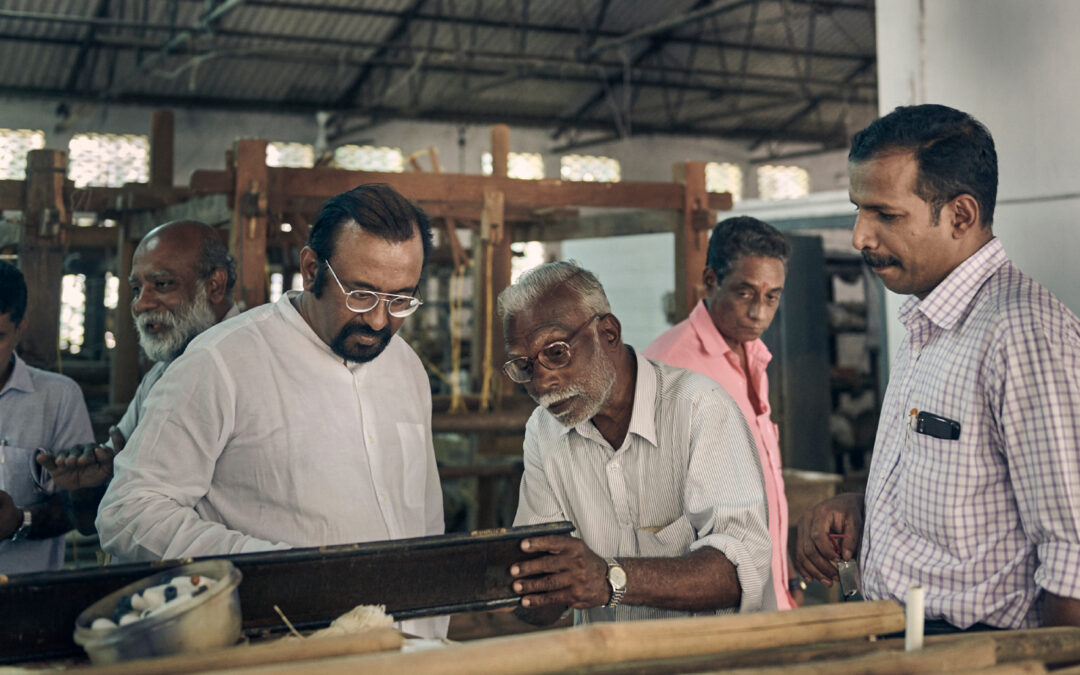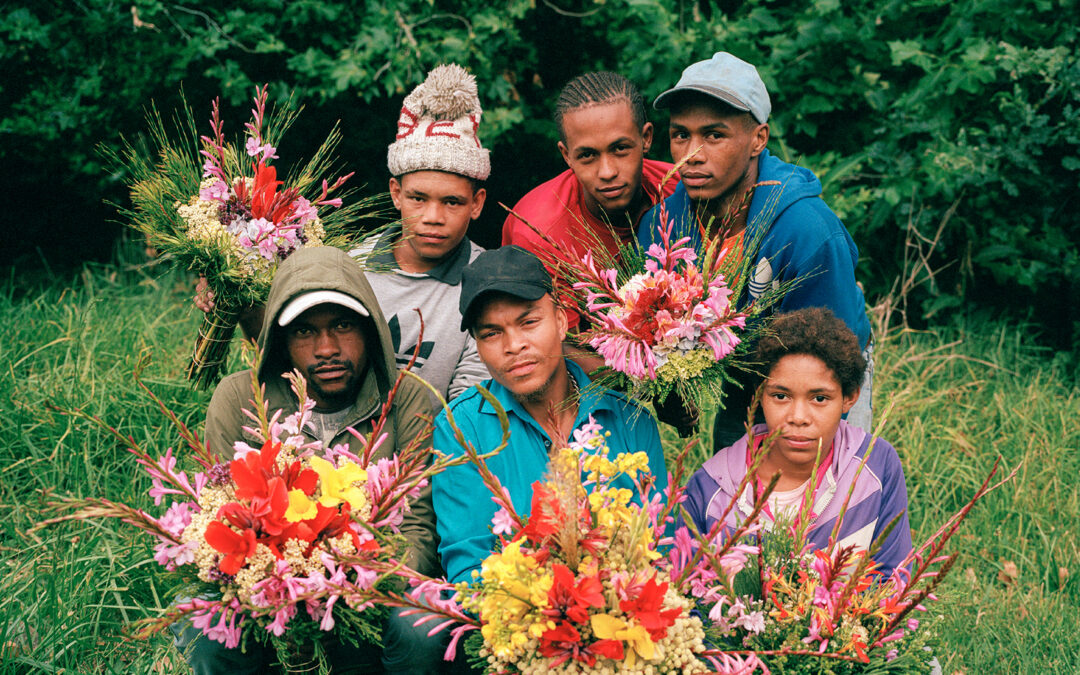I think we tend to forget just how fresh of a phenomenon it is to dedicate one’s career to the creative pursuit. The world has always produced artists and artisans, and creativity encompasses almost all our ability to problem-solve and innovate, no matter the discipline. In this instance – I mean a creative pursuit that extracts us from the caving in of the four walls of a cubicle; pushing the abstract dreams of someone else, mired in a grey, dullness. Chloe Andrea Welgemoed was always far too kaleidoscopic for that kind of prospect.
When reality seems to present a flat surface of 2-dimensional, replicated ideas: Chloe is a stylist and art director, whose maximalist spirited work stands in direct resistance to any and all oblique tediousness. Today, Chloe is one of South Africa’s (and I argue, the planet’s) most important visual story-tellers. Among her portfolio, she is perhaps known as the co-creative partner to Thebe Magugu’s sensational world-building, though Chloe is also responsible for the visual expression of many designers and brands in our South Africa’s contemporary era. A guardian of the sacred gates of our country’s sartorial and narrative evolution; Chloe is that stylist whose vision clarifies the case for fashion as art.
It was a chance meeting with Crystal Birch (in her styling incarnation) thirteen years ago, which first introduced Chloe as a viable career path. The rest is, well, history – as Chloe explains, “I studied at Vega in Cape Town. I didn’t really want to do it – I always wanted to do fashion – but there was no BA degree around at the time, and it just wasn’t a choice. I started with animation, and I majored in graphic design and branding communications. I met Crystal Birch and I just thought ‘who is this magical woman?’. Crystal invited me on set the following day, to tag along on a shoot that she was doing with Kristin-Lee Moolman. It was an immediate yes! I knew of stylists in South Africa, but I didn’t know how accessible it was or how to get into it. I just knew I wanted to be creative. When Crystal told me that she dresses people for a living, that was it for me. I fell in love immediately.” That fateful day led to Chloe approaching Boss Models, insisting that she would do all their test shoots for free. These tests laid the foundation for her recognition – elevating the humble test shot, Chloe began to demonstrate that she should get booked for a job, “It happened quite quickly after that, actually. I think the first photographers to notice my work were Jacques Weyers and Justin Polkey, who saw these test shoots coming in from nowhere, and that’s how I got my first advertorial with Absolut Vodka.”
As Chloe explains, she’s tested out most of the roles that fashion has to offer – with a short stint at Spring Leap, the T-shirt printing manufacturing – “doing production liaison, sourcing the cotton, printing t-shirts, doing shoots with all my friends.”, Chloe had already started her own label, as many who grew up in the zeitgeist of fashion in the 90s and 2000s were led to believe; to make it, you had to be a designer. The apex of Chloe’s design path was a discussion with a big manufacturer for Mr Price, who read her the riot act about how hard it was to be a young designer in South Africa – and that she, most likely, wouldn’t be able to rise above the extreme difficulties of cultivating a brand (things have changed, slightly, with a re-shifted focus to local design among consumers). This spirit-crushing moment elicited a deep confrontation with her current path: switching Chloe to focus full-time on developing as a stylist. On trying many ways to exert one’s vision, I ask Chloe what these various threads began to reveal to her, to which she says, “It’s exactly that – pulling at threads. I guess you keep pulling and then some threads are shorter than others, and some you keep pulling at because it reveals more colour or bits and bobs along the thread. I think it’s a natural thing in search of growth, if you want to grow as a creative person, you have to keep stretching out your arms and figuring things out, and embracing new challenges.”
In discussing Chloe’s genesis story, she mentions that, “it’s an interesting time for me to get into this. I’m in a very transitional period at the moment. Like the artist John Baldessari, who cremated thirteen years of his own work and burned it to ash, and put it into a book that he kept on his bookshelf. I’m kind of in that space.” This transitory space is beckoning a new kind of animating spirit to come forth in her work. You can’t teach the kind of killer instinct that Chloe has honed over time, or the ability to tell a visual story with as much dynamism and intent as she is known for, but for Chloe – the secret appears to be that in order to a dance at the razor-edge of mastery, requires constant reinvention. If Chloe burned her work to ash today, it’s only because something even more expansive required space to germinate.
With her intellectual, artistic and emotional commitment to sartorial consciousness, Chloe shares that she needs to remain reminded that, “an important thing for me is being a stylist – becoming a stylist – and staying a stylist. As a creative person, especially in today’s world, a lot of people see themselves as multi-disciplinary and I think that is important; everything is changing so quickly, how do we keep up? Exploring our creativity is never going to be a one-dimensional thing. Everyone I’ve ever looked up to has never done just one thing, they just tend to be well known for one thing. I love fashion, I love clothes, I was a designer and I was in manufacturing – and I fell in love with styling and chose to develop and master that,” and that, “I was so eager to explore what was next. I briefly did photography and had my own production company – and I found strengths in those mediums but knew I could hire people that suited these roles better… In the last four years, I wanted to get into production design and build sets, and only by actually trying those things, by trial and error, can I honestly assess what I really want to do.”
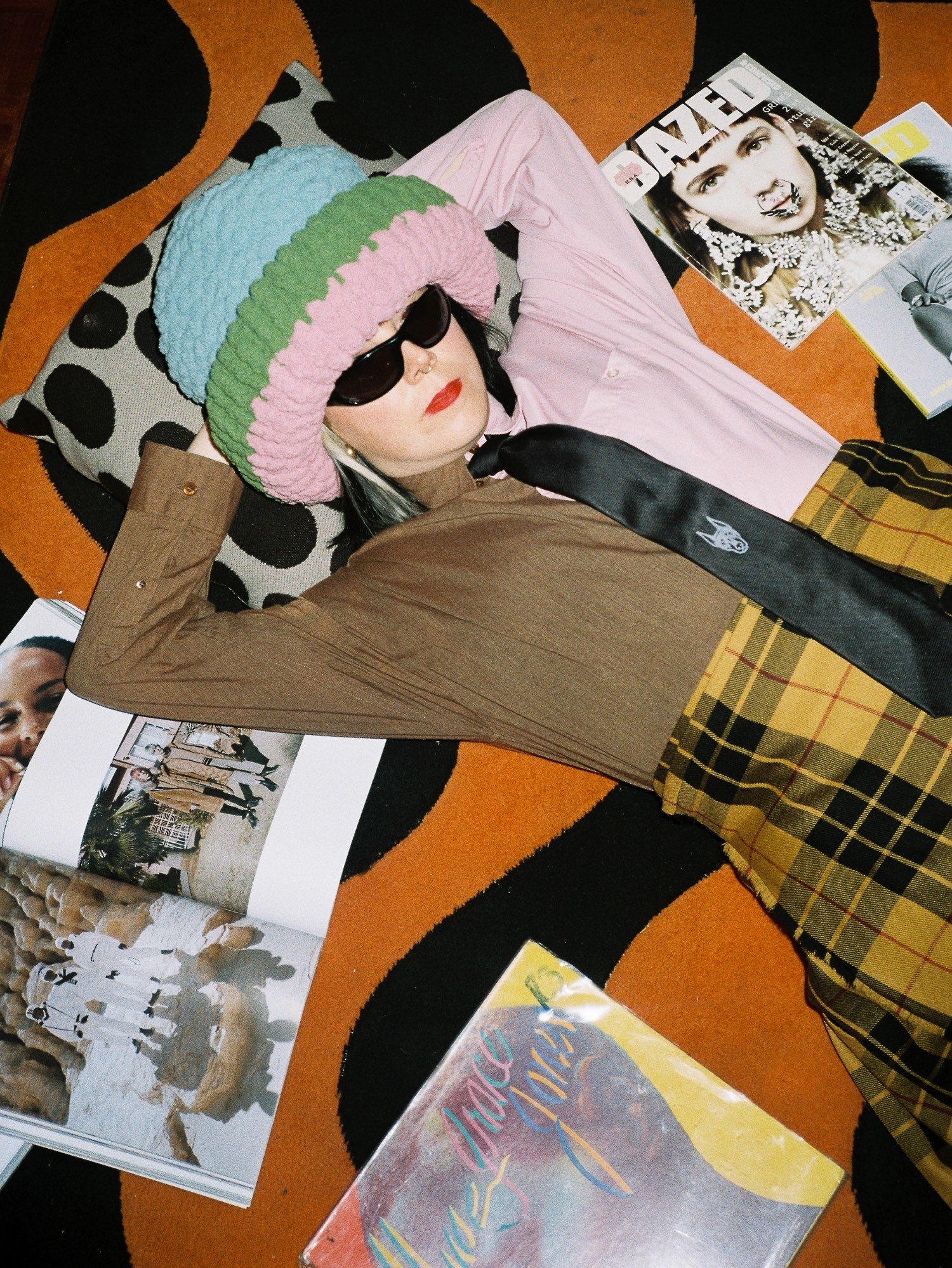
Chloe Andrea Welgemoed photographed by Keith Virgo for Mithatha Studios
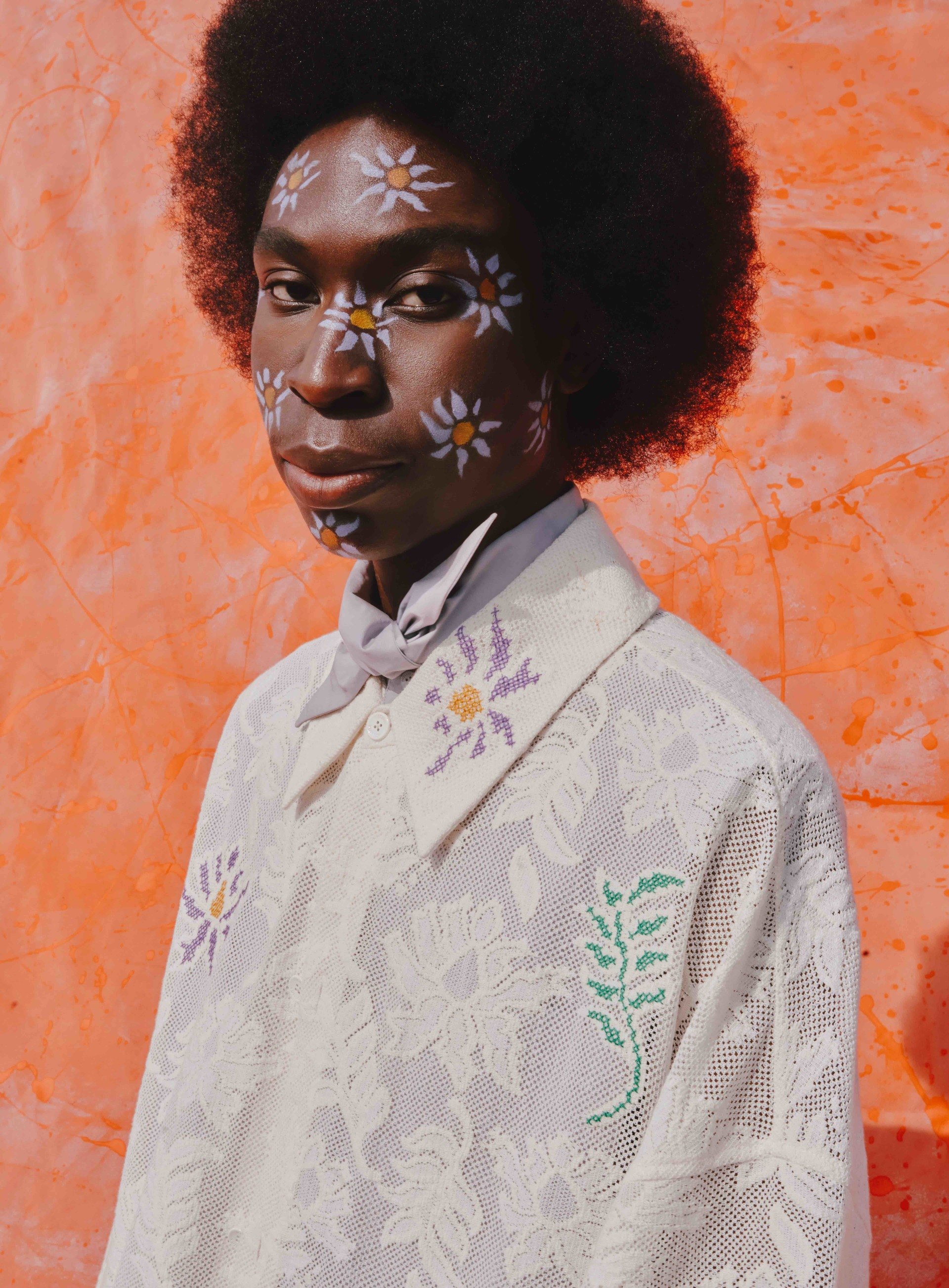
Frankfurter Allgemeine Quarterly, Photographed by Aart Verrips, Styling and Direction by Chloe Andrea Welgemoed
As for Chloe’s process, I ask whether there is something to pinpoint in arriving at a consolidated visual signature in which viewers can know it is her work before seeing her credit or name attached to it; “you don’t know what you can do until you put yourself to the test. You’ll have references and ideas that keep showing themselves in your work. For me it’s a little bit of tartan – a little stripe – my maximalist approach but done in a regal, pared back way. That stuff happens because in the beginning I did way too much. It was only from stepping back and recognising that this doesn’t look great – what can I reframe or take away? As your references develop and as you develop, and you begin to see your own self emerge in your work, that narrative becomes clearer.”
“My process comes from conditioning, from growing up here in South Africa – growing up in Durban, living in Joburg and Cape Town. From seeing the world from my perspective. You can only really build from what you know and you have to remain true to your own mission and narrative as an artist. What is the thread that keeps coming through that tells people who you are? With Thebe I’ve been very lucky because we’ve been building this world together from almost the beginning. It was amazing because he’s continued to grow so much, and I’ve grown alongside him.” Chloe stylistic vision centres garments as part of a deeper narrative. I think of Thebe Magugu’s breadth of socio-political, cultural story-telling, and Chloe being key to realising the visual expression of this. Each aspect of the set- from objects, to motifs, to location, are part of a greater effort that led to Chloe to include the ‘art director’ moniker to her professional title; “I like earlier that you said ‘imager-maker’ because I feel like this is an important thing to speak about. What you do in image-making is exactly that; you have to build a world. It’s a point of view, constructed into a story. I started taking on production design and art direction and including it with styling, because that way everything could be super cohesive. You can kind of see it when people aren’t communicating from different parts of the team.”
In mining for greater depth in her work, and to truly guide the vision unfolding for a brief or a project, Chloe notes that fusing together styling and art direction together has birthed the perfect medium, “I still love fashion, but how do I express myself? Stylists are often very discredited and they’re often put below other creatives, so you could have conceptualised and built an entire image, and then just not be credited for anything other than styling. I really want people like me to get acknowledged for what they’re doing. So, I started to look at art direction, and in that I have started to work with a lot of amazing brands like Adidas and H&M, and this is actually such a natural progression for me.”
Hustling is a South African instinct – there’s a reason ‘maak ‘n plan’ is a country-wide mantra. Building out a relatively new, emerging fashion space is comparably different here across most metrics, as we lack the kind of resources and infrastructure generally available abroad. Despite this, Chloe remains decidedly convinced that there is no time like now to be a South African creative, “I think as South Africans we downplay ourselves. We’re looking at the rest of the world and constantly comparing their ease of access – or the opportunities, whatever it may be. What’s been really interesting for me is understanding what my place is here. I’m not Afrikaans, I don’t really have a heritage that I can hold onto – it’s why I dragged my dad to Scotland to try and trace my ancestry, and I’m still looking for that. I think we have to acknowledge that we all come from different places here. I might not have indigenous heritage here, but I grew up in Durban, and I’ve immersed myself in South Africa in all aspects of my life. Everything around us is so beautiful. I think it’s a very exciting time to be a South African creative. I’ve been the heart of seeing creatives rise up out of nowhere and if we can stay communicating and connecting, despite our lack of resources and everything else, we’re going to keep doing big things.”
On moments that were surreal enough to caution Chloe that what she was doing was precisely right, Chloe reflects that, “Thebe and I always laugh about this – that when we worked with Nadine Ijewere in Paris that we reached our peak, that we could never go above that! I think Nadine was such a breath of fresh air, and she’s a woman who knows exactly what she wants. It was amazing to be in a room with a group of people who cared as much as Thebe and I do on a day to day basis. She took us for dinner and told us that we mustn’t ever stop caring, because that’s what will get us to the end.” The full-circle of it, though, came from an accolade shared by an artistic hero of Chloe, “when I looked at the images of our work with Nadine, I was standing next to Maripol – this 75 year old woman on her birthday, who had literally defined Madonna and Grace Jones’ looks, and she was looking up at me and said ‘I love your work’. That was a big, big moment for me. Her photographic work of Grace Jones got me to pick up a camera.”
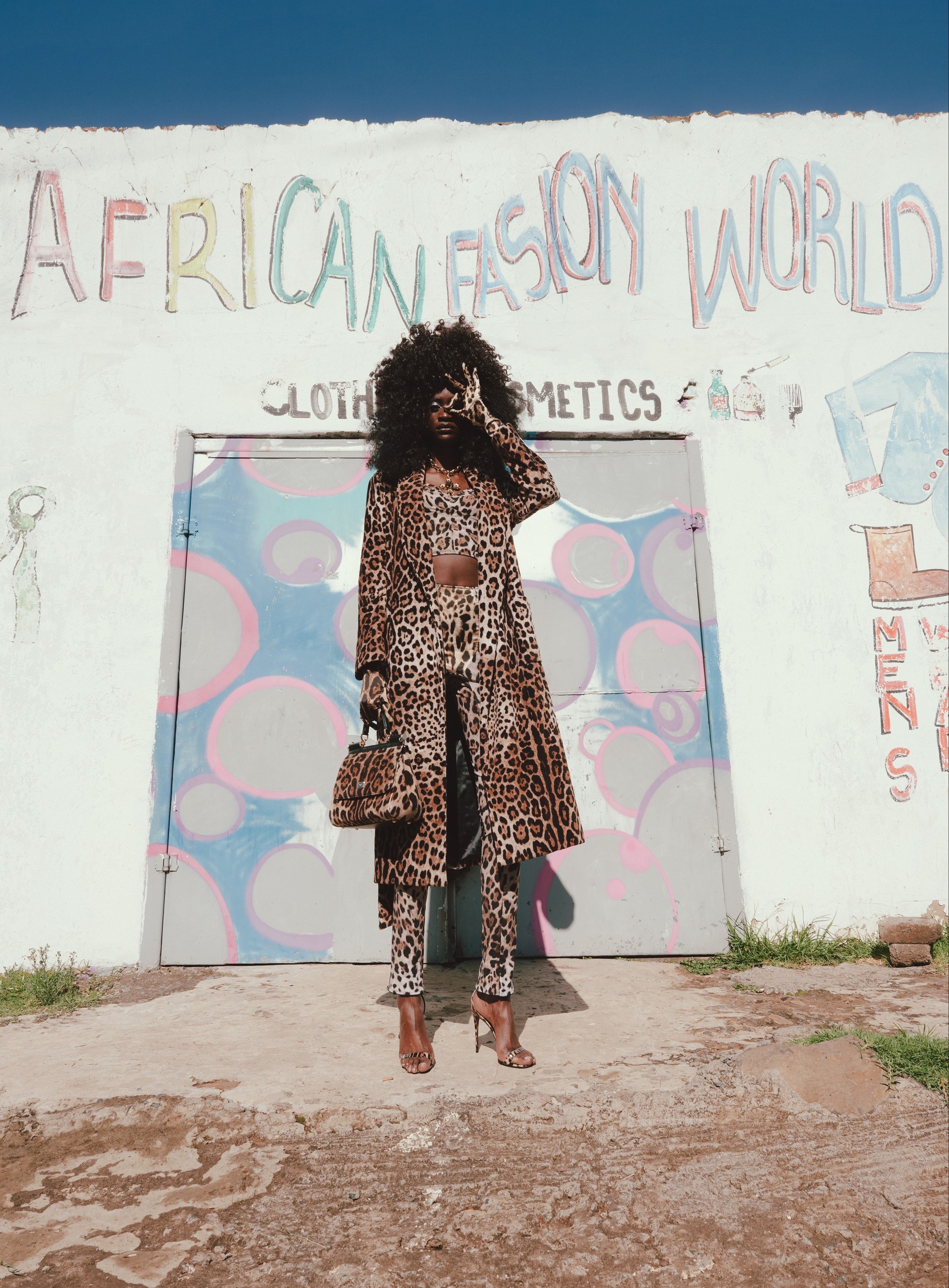
Frankfurter Allgemeine Quarterly, Photographed by Aart Verrips, Styling and Direction by Chloe Andrea Welgemoed
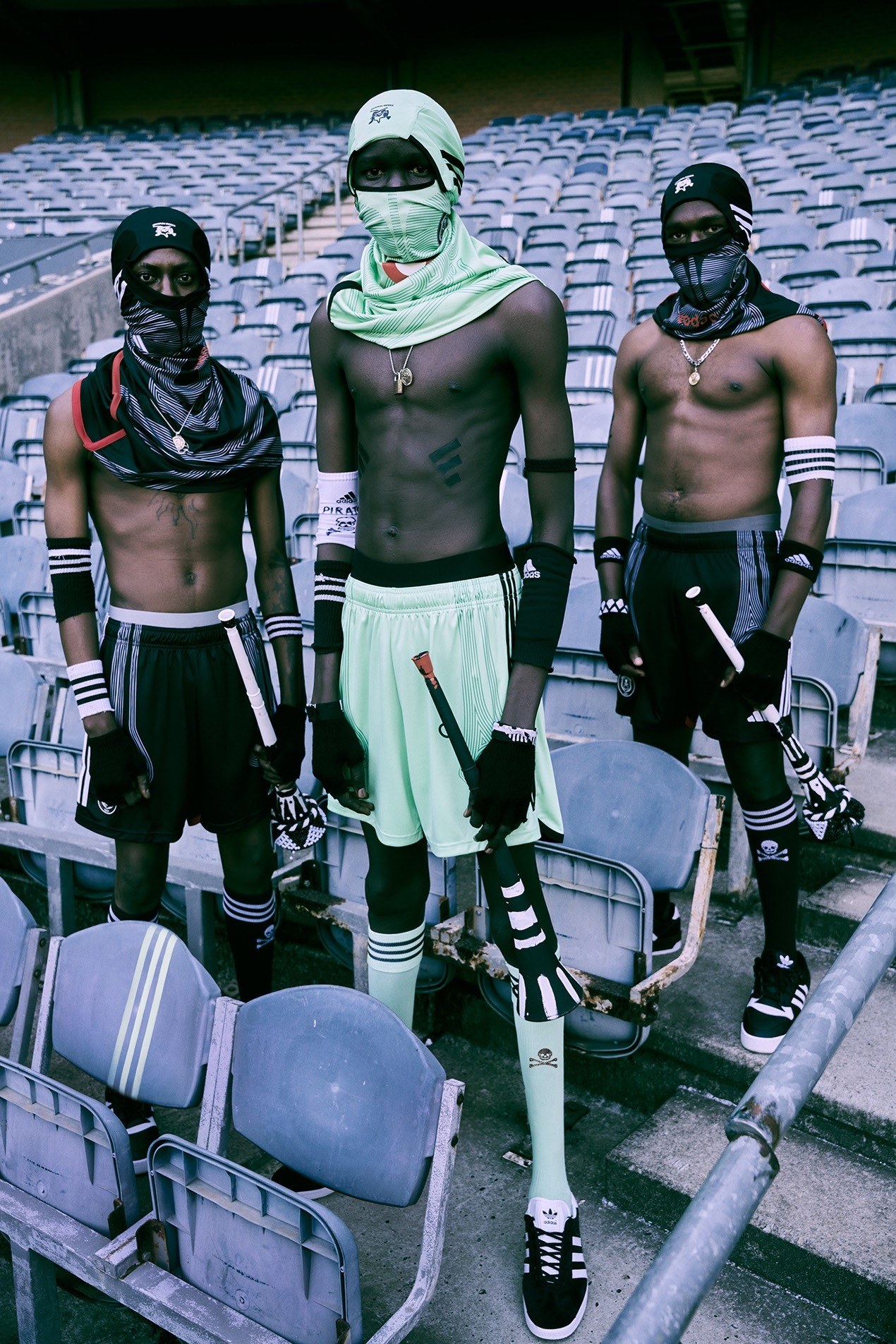
Orlando Pirates x adidas ZA x Thebe Magugu, Photographed by Paul Samuels, Art Direction by Chloe Andrea Welgemoed
“Also, the film we made with Kristin-Lee Moolman, ‘Banyoloyi a Bosigo’ – that was months of work, and it all arrived together with this really chaotic energy. I had just been hijacked and so much was going on, and it all boiled down to a talisman I had bought at the Rosebank market that turned out to be an energetic trapping talisman! It was bad juju. We really pushed through it and I just remember being on a mattress, in the middle of the, Thebe and I just looking at each other in complete awe of what we had just created..” This added intensity to the creation of Banyoloyi a Bosigo occurred during a process which had already had a delicate veil. The film debuted at Paris Fashion Week in 2021 and is one of Thebe Magugu’s most triumphant bodies of work. The collection itself had been made through the summoning of ancestral spirits, through a traditional healer that Thebe had invited to his studio in preparation for the design process. Coupled with ancestral intervention, the film was a portrait of the spiritual dimension through the lens of realism – both centering the feminine and elevating the role of models (beyond as clothing hangers for designers) to become embodied characters in a designated dimension, as rivalled gangs on a pursuit, as they were dosed with love and transcendence. My beloved epitaph ‘sartorial consciousness’ doesn’t even cut it to describe just how critical this kind of storytelling is: imagine using fashion to realise the dreams of generations that lived, created, and died before you?
As Chloe says, “I was chatting to Mandla (Sibeko, founder of FNB Art Joburg) who was saying to me that there’s a new place for image-makers in the art world. We haven’t seen beautiful editorials credited as artworks, or generating income, and where is there a return on that other than building your portfolio? I think there’s a new space emerging that excites me, where image-making is understood as art, too.” In this liminal space, where the pull of a new rebirth is imminent, I ask Chloe what might be next? To which she says, “Art in Africa is blowing up. I want to explore something that’s on my own. Whether it’s painting, or photography. I’ve started a small photography page called Chlo’s World and I’m loving it – it’s all point and shoot. I guess that’s what Maripol did, she photographed Jean-Michel Basquiat, Andy Warhol, and Debbie Harry with her Polaroid camera, documenting important parts of her career and the community she was surrounded by.
There is a lot on the go, with Chloe recently returning to Cape Town to live full-time after being in Joburg for seven years. Seven years, the numerological cycle of beginnings of endings, feels incredibly apt for this moment. There is the upcoming launch of Chloe’s own creative studio, ‘Spaanspeck’, which “hasn’t officially launched because I’m really taking my time with it, to get it to the place that I want to be. Someone called me a spark once and that’s always resonated with me. I’m good at bringing people together and bringing out the best people. Spaanspeck will be about building projects by people who know what they’re doing – in both experience and knowledge. I am also in the process of launching Wild Scenes Studios which is a Creative Apparel Workshop with my partner Kristy Welman, we wanted to build a space for ourselves and for others to find & create things that don’t exist. No idea is impossible at Wild Scenes and again it harnesses community, which I love.”
As a new wave emerges, Chloe will be riding front and centre – having already built a legacy that has inspired a generation of creative to take up the mantle. On sharing words of wisdom, Chloe expresses the potentiality of South Africa’s cultural purpose – with perfect pitch, no less; “you have to be brave and you have to believe in what you’re doing. I guess on building worlds – I never would have thought that in Fashion in Motion in London, for Discard Theory, that we would have a giant China bag built as a place for women to walk out of. It’s been a crazy ride.”
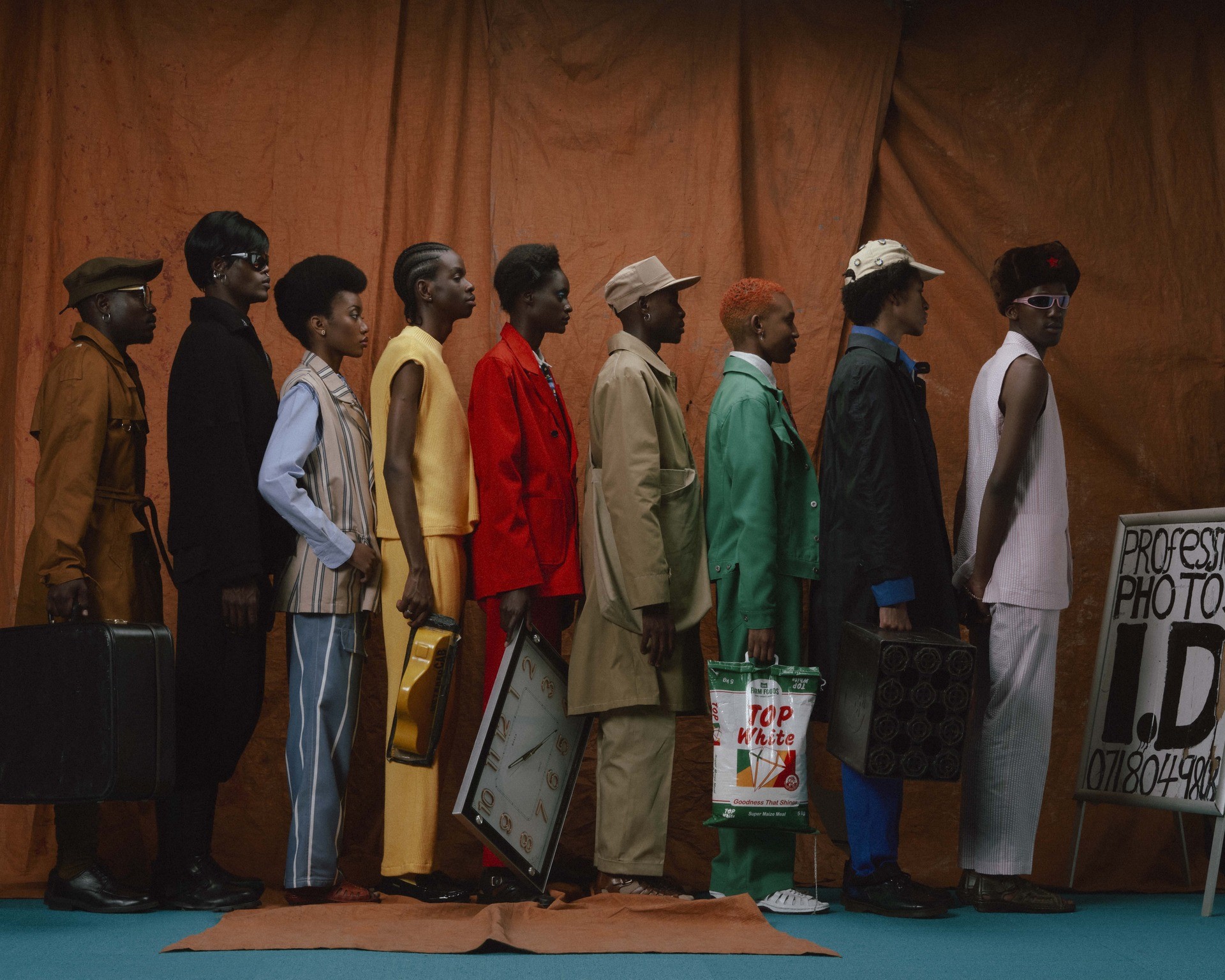
Wanda Lephoto SS22 “Home Affairs”, Photographed by Aart Verrips, Styling and Set Design by Chloe Andrea Welgemoed
Thebe Magugu x adidas, Photographed by Kristin-Lee Moolman, Set Design and Styling by Chloe Andrea Welgemoed
Written by: Holly Bell Beaton
For more news, visit the Connect Everything Collective homepage www.ceconline.co.za

